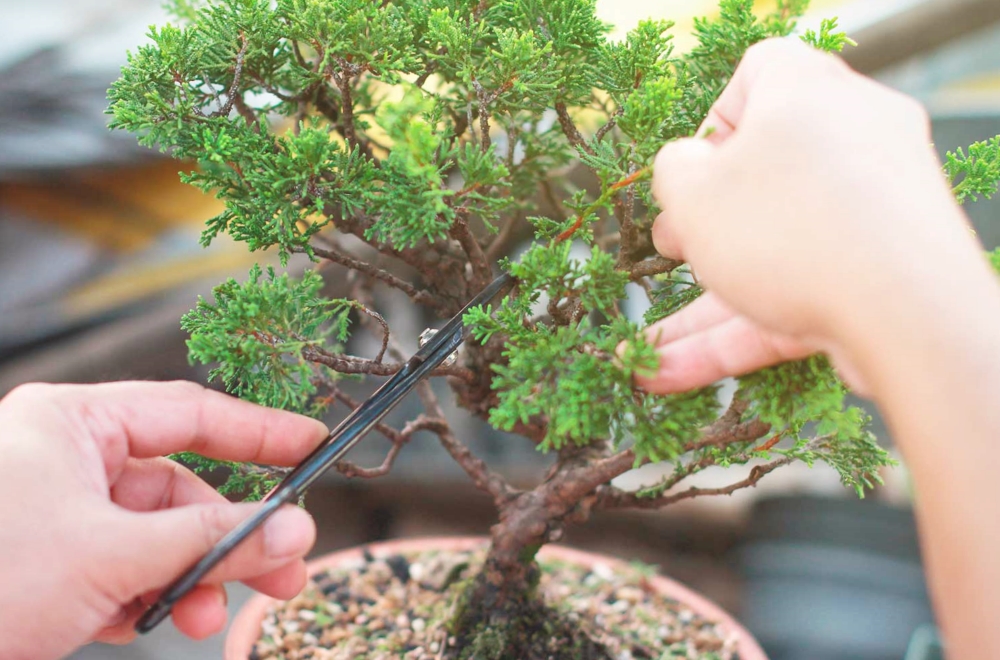
When all the leaves are gone it’s time to prune your bonsai trees. It’s time to care for your tree after it has produced all it’s fruit… leaves, really. When it comes time to prune you can do it easily and should you choose to, you should prune it during the growing season. The autumn season is the best time to prune. You should start pruning at the end of summer or the beginning of fall.
Before you start, hopefully you have a plan. Often times I have had patience, and have not pruned as I should have. Typically I will prune after I’ve noticed new growth coming up and then move my tree. Sometimes there is no need to prune of course, but let’s say for example no new growth is supposed to be coming out. That’s the time when pruning should be done. Possibly you can change things in the spring, which can be fun. I usually prune at the end of the summer if I have pruned in the summer I just prune whenever I see new growth as it is called “marketing.” I know a lot of people that do prune right after they prune. All you’re going to be doing is pruning and the tree is going to respond by growing.
“The usual” method is the most common pruning method and it’s simple. It’s amazing how many times I’ve pruned this way and I never understand why anyone would do that.
The “usual” method involves the branch that is closest to the ground, and is also called the terminal bud. You get to decide where the branch is going to originate from and it’s a pretty simple device to make. If you want your cue branch to appear towards the front of the tree, just make the terminal bud directions parallel to the branch base of that you want to train. If you want your cue branch to appear towards the back, make the directions perpendicular to the stem.
If you bear in mind that there is pruning going on with the branches you make, that means that your pruning knows where those branches are coming from. Don’t make the branches you wish to remove grow right up the side of a tree branch or two. The branches there need to have to be pruned at a 45 degree angle, like you’d see right off a branch with aodon over there in Europe. The other out is right above where the final branch should originate. At 90 degree angle that I am about to bore, the other branches should come down and move back toward you.
When the branches are cut, cut the one that you wish to carry forward. If it’s just a branch or a new trunk that you want to get rid of, cut it a little above the ground, the one that you want to keep. If it’s part of a branch or a new trunk, then cut it right above where you want it. If you cut it right above, more the trunk or branches are going to grow, more will be pruned. Keep in mind that the pruning is going to take some time, but it’s better to be pruned a little above the ground than too low down.
Another way to prune these techniques is something called a witch’s grocer or pointed shears. It isn’t used as much as the others, but it works pretty well when it is. To use a witch’s grocer simply follow these directions. Shears work from the bottom higher up. Hold you hand out and turn your wrist into a prayer position. Start facing the ground, (if you’re a little above ground and you don’t feel some ridges, hold your hand flat for a minute and then work backward).
Then reach forward and at 90 degrees sharply grab your hand. At the same time you should feel a ridge going across the bottom of your wrist and pull a couple backwards. Swing your arm forward just upward to bring it back down and touch your thumb. That’s going to be your witch’s mixer and you continue rolling your shears back and forth along your thumb for about five or ten seconds. Make sure to brush them off when you are done.
Whatever method you decide to use, you’re going to be cutting off a lot of growth at this time. Remember, your scratching around away at the roots and shrubs is actually scratching away at the roots and then branches.
Owning a Bonsai tree is a great way to make your home feel truly special. Pruning that Bonsai is an absolute must to keep it in the best shape possible so just follow these tips and you’ll be well on your way to having a Bonsai tree that is always looking it’s best and complimenting your overall home’s look and feel.